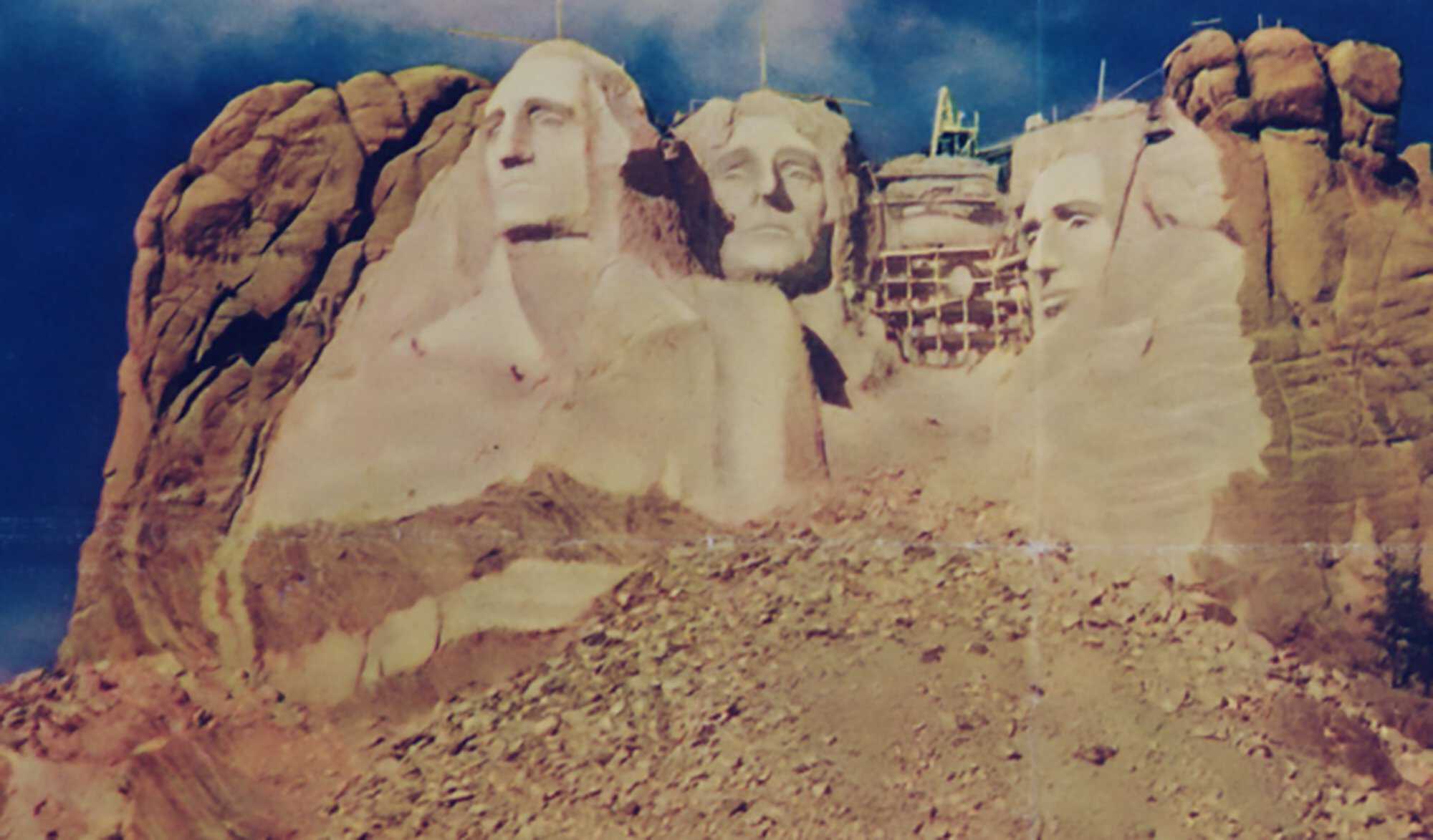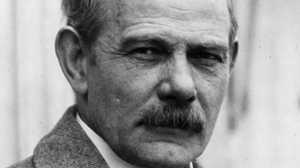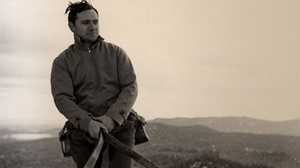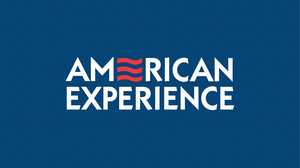The Contest to Explain Mount Rushmore

Among his first ideas about carving Mount Rushmore into the likenesses of American presidents, the sculptor, Gutzon Borglum, insisted that there should be an explanatory inscription, which he called the Entablature. Without it, the heads of Rushmore would mean as much to future historians as the unexplained heads of Easter Island: "You might as well drop a letter in the postal system without an address or signature as to send that carved mountain in to the future without identification."
The Entablature was to tell the history of the United States in the space where Lincoln's head would later be situated, a space that would accommodate about 500 words. (This provoked journalistic snickers from Europe -- the history of a nation in 500 words?)
At the dedication of work at Rushmore in 1927, Borglum addressed the most important person in his audience, President Ca;vin Coolidge:
"Mr. Coolidge! As the first president who has taken part in this great undertaking, please write the inscription to be carved on that mountain! We want your connection with it shown in some other way than just by your presence! I want the name of Coolidge on that mountain!"
In the last days of his presidency, Coolidge signed into law Public Law 805 of the 70th Congress, which would establish a commission. "The commission is to complete the carving of the Mount Rushmore National Memorial, to consist of heroic figures of Washington, Jefferson, Lincoln, and Roosevelt, together with an entablature upon which shall be cut a suitable inscription to be indited by Calvin Coolidge." The bill also provided a $250,000 for the project.
When Borglum had to rearrange the faces on Rushmore, moving Jefferson to Washington's left, he had no room to include the Entablature on the front side of the mountain. Stubbornly, he proposed carving it on the backside, on the wall facing the Hall of Records. In Borglum's imagination, the inscription would be written in "English, Latin, and some Asian language" (most probably Sanskrit, a language that his wife Mary had studied). The trilingual inscription would, like a new Rosetta Stone, aid future archaeologists in deciphering languages that would be dead by then (never mind that two of the three were already dead in 1930).
In April of 1930, Borglum released Coolidge's first two paragraphs to the public. Or rather, he released edited versions of Coolidge's words to the public. Every newspaper in the land suddenly seemed to consist of literary critics who mocked the president's efforts. When Borglum admitted publicly that he had changed Coolidge's words, he simply fueled more jibes -- perhaps Coolidge should edit Borglum's designs for Rushmore? Eventually the controversy died down and Coolidge withdrew from his assignment.
In 1934, a year after Coolidge's death, Borglum took a different tack with the Entablature text. He went to newspaper publisher William Randolph Hearst and asked him to publicize a contest to write the text. Hearst agreed, and agreed to supply cash and scholarships as prizes. The Rushmore Commission, however, was nervous about the legality of the contest. Although he was now dead, the law explicitly required the Entablature be written by Coolidge. Before they could act, however, the contest was announced in the Hearst papers. The Commissioners decided to keep the legal issue quiet and deal with the problem if it came up.
Meanwhile, President Franklin Roosevelt accepted Borglum's invitation to head a judging committee to include Eleanor Roosevelt, Interior Secretary Harold Ickes, and other VIPs. The contest was extremely popular -- sources say that more than 100,000 entries were submitted -- and Rushmore was national news. Winners were announced in several age groups, including grade school, high school, and college. There was one overall winner, John Edward Bradley. The college edition winner was William Burkett of Nebraska. His scholarship allowed him to go to college and he later became a successful businessman in California. Burkett told one historian that he owed his success to the Rushmore Entablature Contest and wished to be buried near the monument.
As it happened, Borglum read the winning essays, and rejected them all. He had no desire to carve any of them on his monument, and would write another text himself.
As the Depression wore on, and then the country prepared to arm itself for the Second World War, Congress could find no justification in paying for any extraneous elements of the monument that were not already begun. The Entablature was written out of Rushmore's budget.
In 1975, William Burkett was present to see his winning contest entry written on a bronze plaque and installed at the site of Borglum's original studio. Burkett died in 1999 and was buried in Monterey, California.







